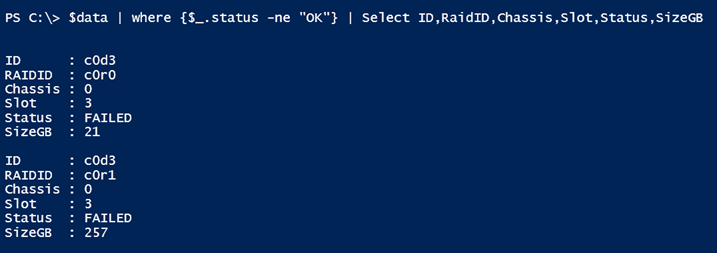

in Raku a leading ~ tilde is used to stringify the match object, and.Raku changes capture numbering to start from $0 (Perl starts from $1),.Other minor differences include the fact that: The most significant difference is that in Raku all non-alnum/non-underscore characters must be escaped to be 'understood literally' by the Raku regex engine.
#POWERSHELL GREP A LINE CODE#
The code above is virtually identical between the two languages. By default, Select-String finds the first. The grep utility allows a user to search text using some different options, but this utility doesn't exist in Windows. findstr is often used as a grep equivalent in Windows, as it has similar functionality to the Unix grep command. Lets delve into its fundamental features and explore some practical examples. Understanding the basics of PowerShell Grep is essential for effectively harnessing its capabilities. An easier way is to use Get-Content, this converts a file to an array of strings. PowerShell Grep is a powerful command-line tool that allows you to search for specific patterns within text files or output streams. Fear not PowerShell comes to the rescue with its equivalent command called Select-String. However, you may not have access to grep natively if you work in a Windows environment. It has become a staple for many developers and system administrators. Select the table that you want to import. Grep is a powerful command-line tool for searching text files for specific patterns.
#POWERSHELL GREP A LINE PDF#
In this window, youll see the different tables that the PDF file contains.

Once you click Open, a navigator window will open in Excel. From the list, select From File and then select From PDF. It will not work in your case because you want to search for the line separator. In the Get & Transform section, click on Get Data. You could use Select-String to find patterns in a group of files, however this will only search for the pattern within each line of text. This is an example of a line that I need to filter: T05:37:43-08:00 isi-udb5-ash4-1(id1) /boot/kernel.amd64/kernel: (pid 40370="kt: gmp-drive-updat")(tid=100872) new group: : When writing PowerShell code and you need to search for text inside of a single string or an entire text file, where do you turn If you've used Linux very much, you're probably familiar with the popular grep utility. For some reason -pattern 't' returned files.
#POWERSHELL GREP A LINE HOW TO#
I have played with using sed or awk, but have not been able to figure out how to filter the line to either delete the part before the match, or just return the part after the match, either will work. The portion before and after the match will consistently vary. It need a way to match lines to a pattern, but only to return the portion of the line after the match. Not dinging PowerShell, but I sincerely appreciate how. The simplest PowerShell equivalent to grep is Select-String. PowerShell is fine, but to do manipulation like this well usually takes dropping to. So pulling open a file with cat and then using grep to get matching lines only gets me so far when I am working with the particular log set that I am dealing with. You can use Select-String similar to grep in UNIX or findstr.


 0 kommentar(er)
0 kommentar(er)
